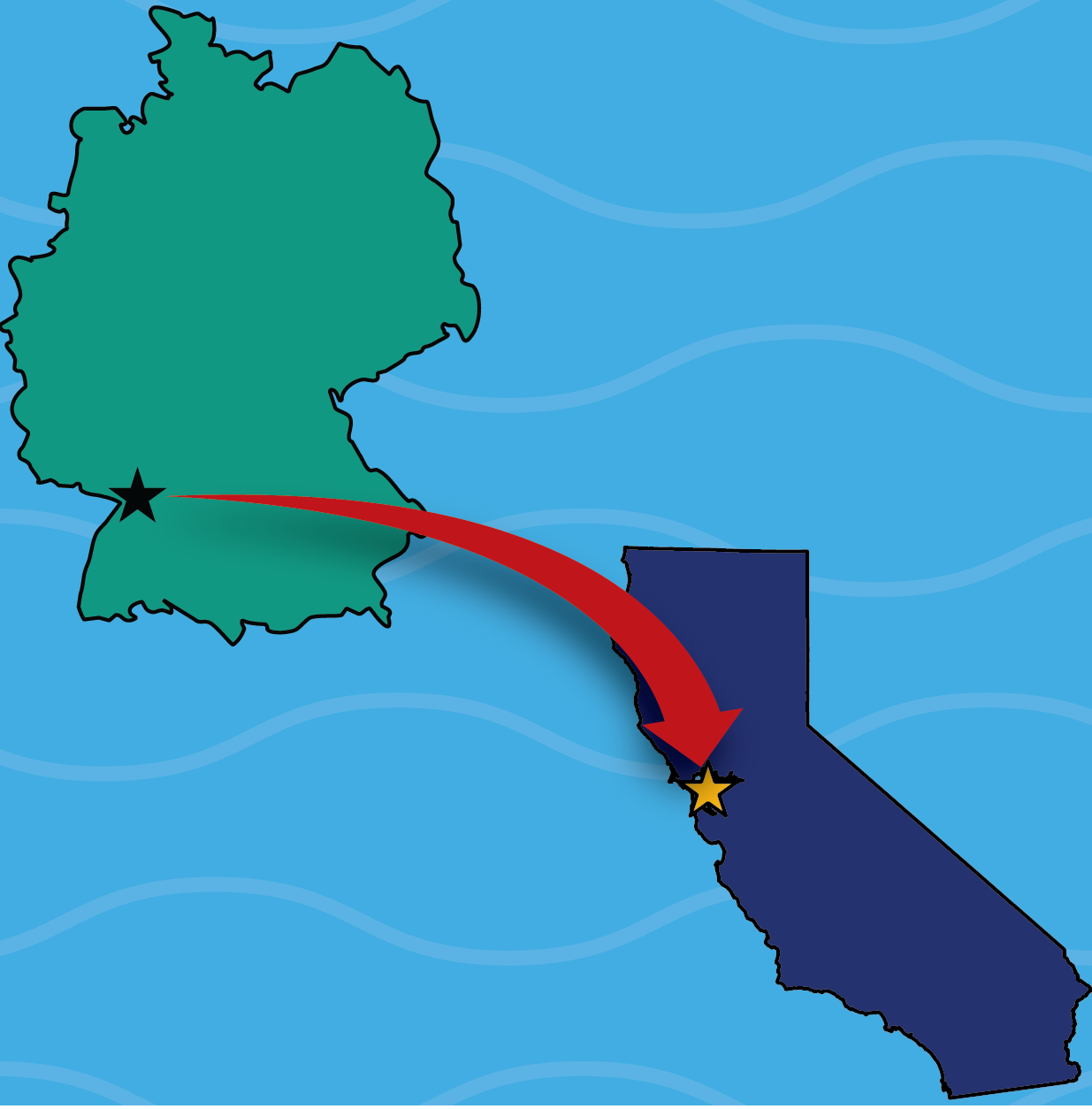Tabletop versus Sims: predicting earthquakes is no easy game
How computers and a box of dirt can simulate earthquakes
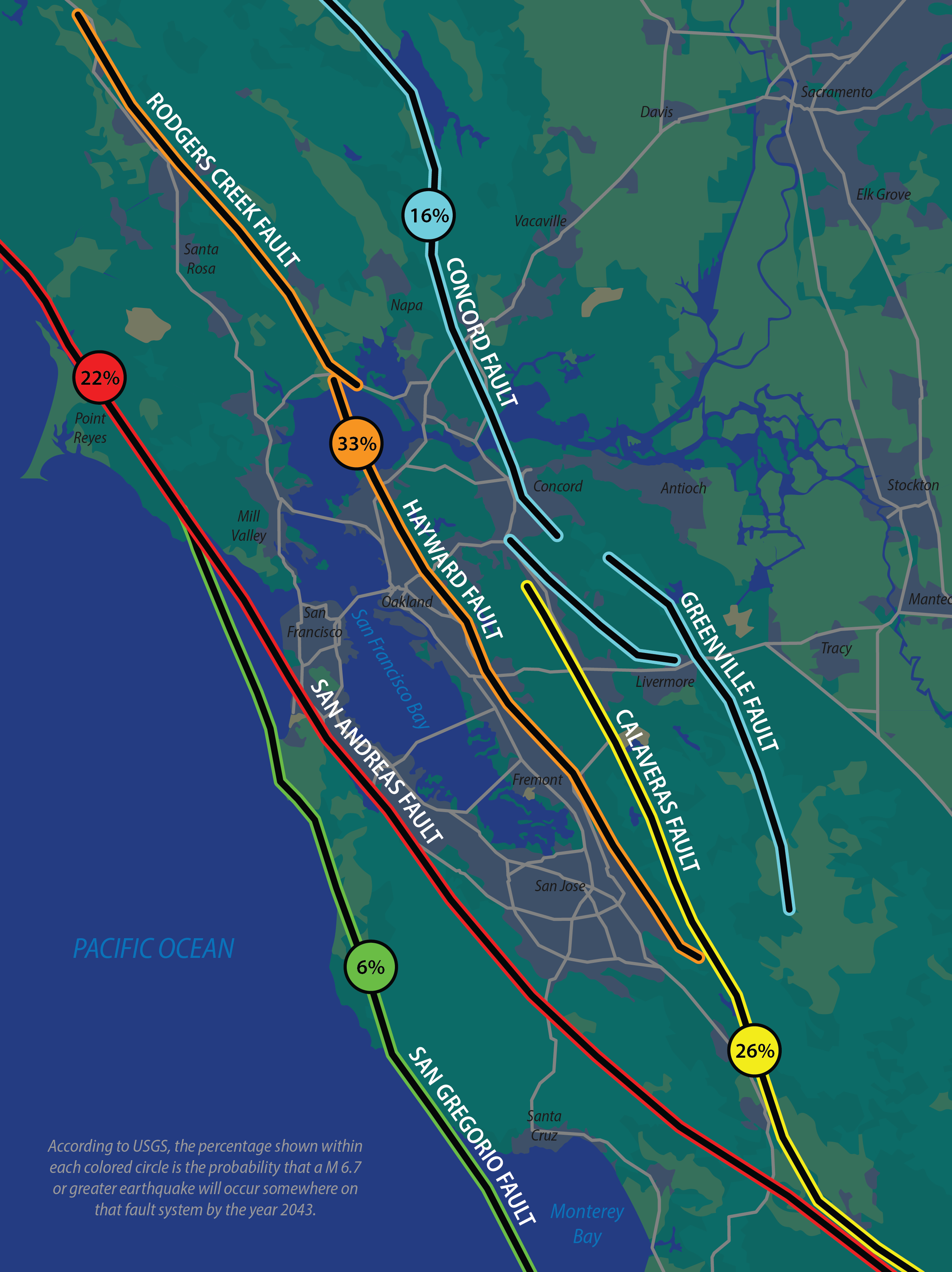
A little after 5 a.m. on April 18, 1906, the ground began to shake as a nearly 300-mile fissure opened across the San Andreas Fault, located along the Northern California coast. A minute later, sections of the fissure had separated by over 20 feet. Thousands of buildings in San Francisco had been leveled, and fires—which would burn for three days and cause far more destruction than the earthquake itself—had been ignited. Recent estimates put the death toll at over 3,000 people—about 1 percent of the entire population of San Francisco at that time—and another 225,000 people (56 percent of the city) were rendered homeless. Economic damages from the earthquake and fires totaled $400 million at the time, translating to over $13 billion in today’s money.
Compared to other natural disasters, earthquakes are some of the fastest striking, are difficult to predict, and are often the most devastating. Notably, of the ten most deadly natural disasters in human history, earthquakes account for roughly half, followed by cyclones and floods. This trend has continued into the modern day, with the most recent example happening in early 2023 in Turkey and Syria, where a magnitude 7.8 earthquake resulted in 60,000 deaths, many due to the nearly 50,000 collapsed or severely damaged buildings, and totaling around $121 billion in damages. This earthquake was one of five in the past 20 years with a death toll of over 50,000. In contrast, death tolls from cyclones and floods have been largely mitigated in the 21st century, with only one cyclone and zero floods surpassing this threshold of human life lost.
This difference in death toll magnitude is due to the lack of engineering controls and prediction tools for earthquakes. Unlike floods, which can be prevented through engineering controls like dams and levees, or hurricanes and cyclones, which can be forecasted with great accuracy many days in advance, earthquakes continue to defy prediction. Due to the immense number of variables at play in the Earth’s tectonic system, earthquake probabilities can only be assigned over decades-long time periods. Even today, the greatest amount of advance notice one can expect for an earthquake is a minute or two at best, or more typically around 20 seconds. As an especially relevant example for Berkeley residents, in 1999, the United States Geological Survey (USGS) put the odds at 67 percent that a major earthquake would hit the Bay Area in the next 30 years. We haven’t observed such an event since that prediction, but we likely will in the coming years. Are we and our buildings prepared for such an event?
Most earthquake casualties result from building collapse, especially large residential structures. For example, in the 2023 Turkey-Syria quake, most casualties occurred in residential buildings ranging from four to 12 stories. Regions with high population density are even more vulnerable to mass destruction, such as that caused by the 2008 Sichuan earthquake, which destroyed over five million buildings. Events like these highlight the importance of designing buildings that are capable of withstanding earthquakes in areas susceptible to seismic activity. Structures in these areas must resist collapse even when subjected to millions of pounds of force, for the safety of both their inhabitants and those around them.
Luckily for those of us located in the Bay Area and others in fault zones around the world, some of the world’s best and brightest earth scientists are hard at work gathering data to design buildings to do just that. A joint project between Lawrence Berkeley National Lab (LBL) and the University of Nevada, Reno (UNR) is hard at work simulating the effects of earthquakes on buildings both physically (with a giant shaker!) and virtually, with their Earthquake Simulation (EQSIM) application. Together, these two projects will enable scientists to better understand how both single structures and regions as large as the San Francisco Bay Area may behave in the event of a major earthquake.
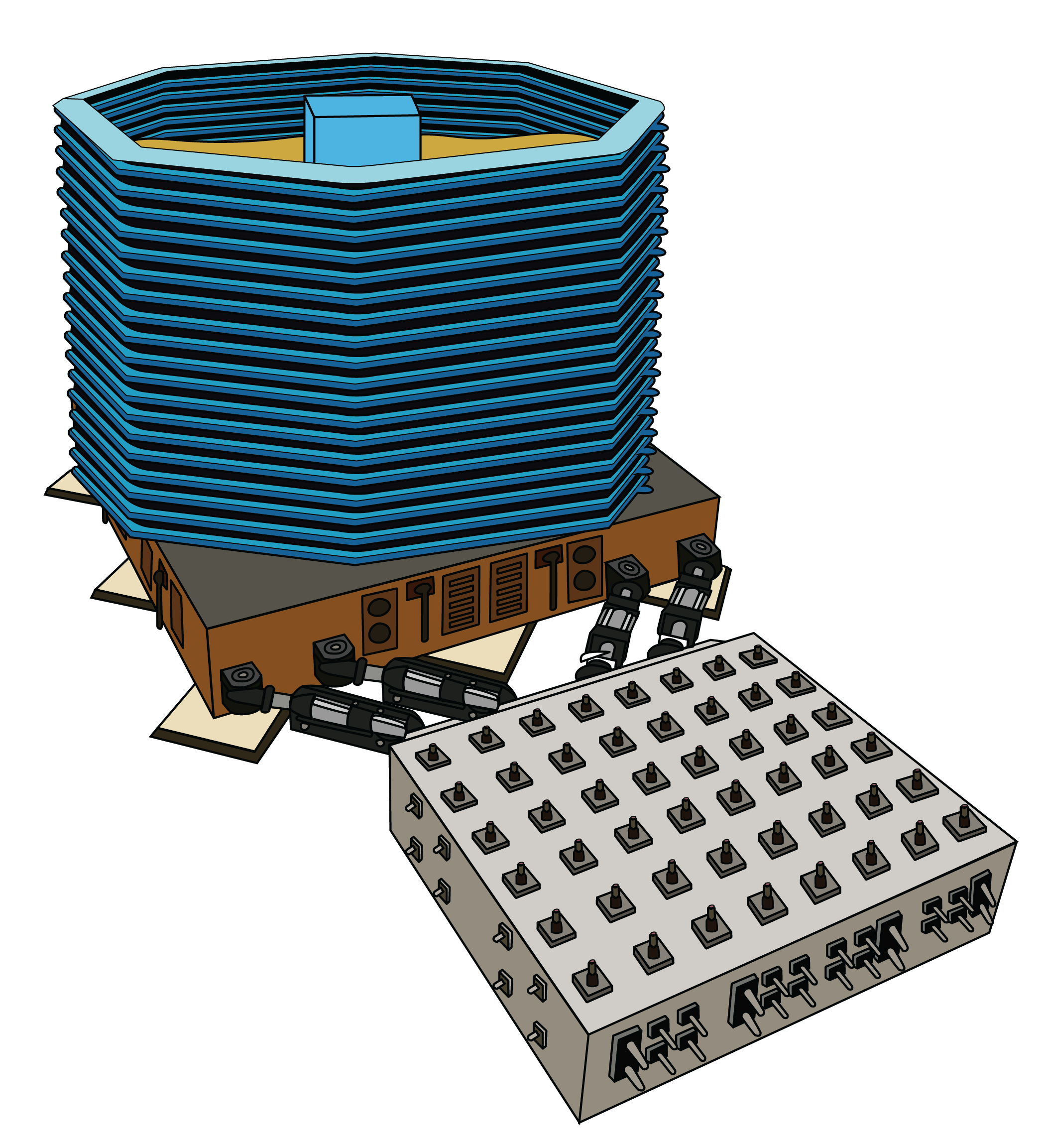
Playing in the sand soil box
Designing buildings to be earthquake-proof is a task easier said than done. Numerous variables such as soil composition, direction and magnitude of vibrations, and building foundation depth can all affect how a structure reacts during an earthquake. Dr. Ian Buckle of UNR has made a career of studying the relationship between these variables and human structures, including the influence that different soil compositions can have on building stability during earthquakes.
One of the most dangerous phenomena that can occur during an earthquake is known as liquefaction, which takes place when loosely packed or water-soaked soil behaves similarly to a liquid due to the intense shaking of an earthquake. This phenomenon greatly reduces the strength and stiffness of the ground beneath man-made structures and can cause catastrophic damage. However, the exact effects of liquefaction are poorly understood, making it difficult to predict which areas or structures are at the highest risk. Other factors, such as soil strain (horizontal distance traveled by soil divided by its depth), can also influence building foundations, especially those which are anchored at greater soil depths.
To better understand these phenomena, Buckle and a team of other scientists at UNR and LBL spent five years developing and constructing the Large-Scale Laminar Soil Box system, a massive container that can hold up to 350 tons of soil, on top of which model structures will be situated. In designing this box, several factors had to be considered. First, Buckle explains, the box had to be ‘invisible’ to the soil, so that the soil can move in the same way that it would in the earth. To achieve this, the box walls must be flexible enough that they do not hinder soil movement, while remaining strong enough to contain the massive weight of earth that must be shaken. Secondly, the box had to be as large as possible, so that the model buildings are as close to life-sized as possible, while fitting in a 60×40×30 cubic foot space. Finally, the box had to be able to withstand the shaking required to test earthquake performance without destroying itself, a problem that several other large shake boxes have had in the past.
With those goals in mind, the box was designed with several key qualities. Notably, the box is an octagon, 21.5 feet across, as opposed to the square and circular boxes which have been built in the past. This design is a compromise between the square and circular designs, as the corners of square boxes are difficult to pack with soil but are more structurally robust, while circular boxes pack very evenly but are prone to self-damage resulting from accidental vertical twisting of the box during shaking. To hold all the soil, the box walls are composed of alternating layers of steel and rubber bearings. The rubber bearings allow the walls to shift and move as different soil layers would during an actual earthquake, giving the box the desired “invisibility.” By decreasing the number of bearings, the flexibility of the walls can be increased, or vice versa. The rubber bearings are also less prone to shake-induced damage than mechanical bearings that have been used in the past. As an added benefit, the layers allow the walls to be customizable, as they can be constructed in 10 inch increments up to 15 feet.
The box is situated on a hydraulic-powered base that can shake it along two axes with up to 1.25 million pounds of force, equal to a near magnitude seven earthquake. All of this allows for a 5 by 5 square foot “undisturbed” area in which model structures can be placed. The scale of the model structure will depend on the size of the actual building, but typical structures can be modeled at up to a 1:5 scale. Together, these features give the box a blend of size, flexibility, and durability that set it apart from previous soil boxes.
In testing, the box was constructed to a height of 10 feet and filled with 13 dump trucks worth of soil. The soil used in the test is known as “well-graded sand,” meaning it contains both large and small particles, and was chosen due to its use in backfilling building foundations. Upon shaking, soil strains of one to two percent were measured in trial experiments, which is comparable to those measured during real earthquakes. Buckle and the other scientists involved in the project are optimistic that these tests demonstrate the box’s ability to mimic real-life earthquake conditions, and the first experiments are set to commence at the end of this year. Once these tests begin, a variety of soil compositions and structures will be tested. To assess the accuracy of these tests, the collected data can be compared with theoretical calculations. “The goal,” Buckle says, “is to use the data from experiments to validate numerical models, which can then be used to predict building response in a variety of scenarios.” With this model in hand, engineers and scientists will be able to design new buildings with maximum earthquake safety, hence reducing the potential damages and loss of life in the event of a major earthquake.
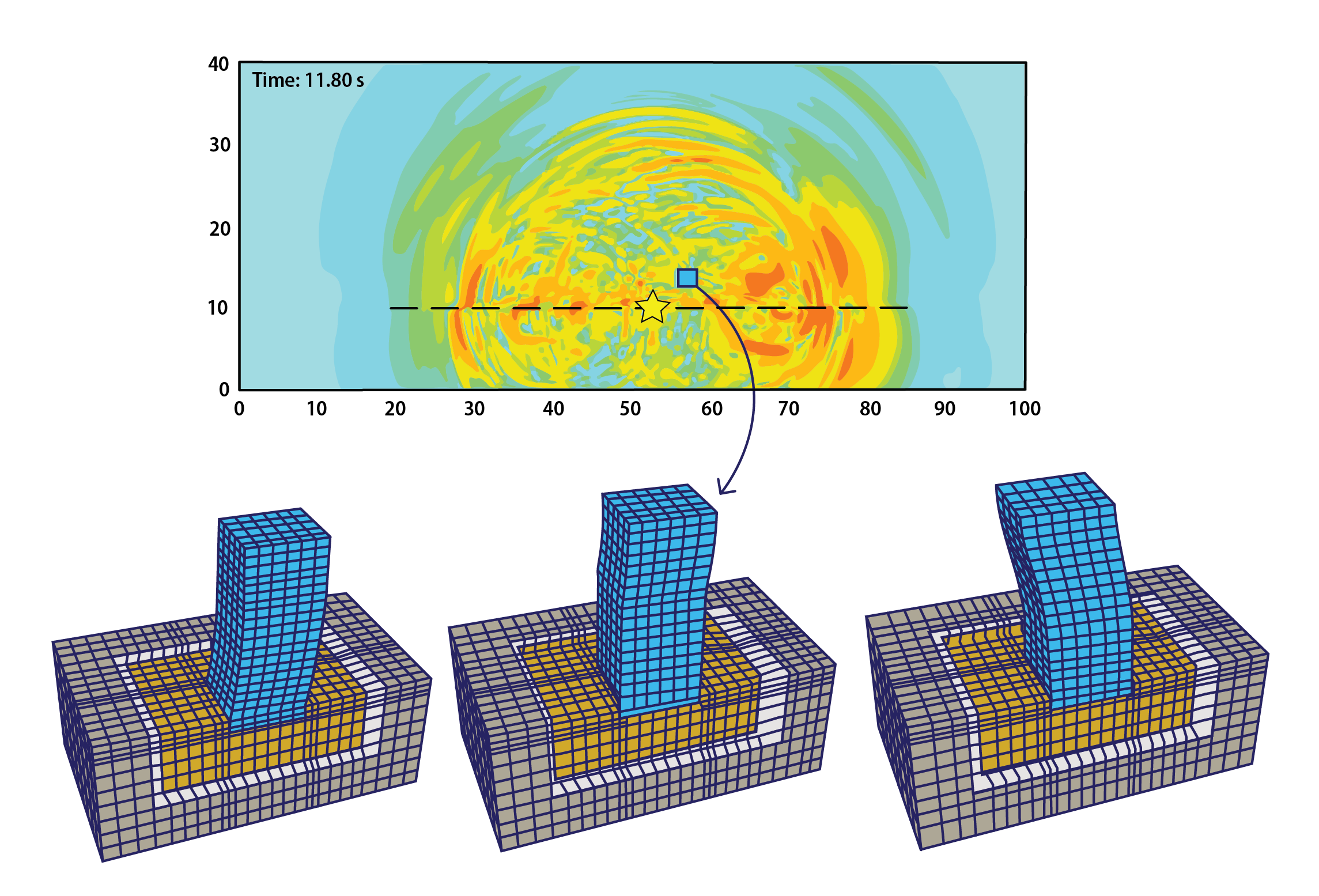
Larger scale models—the Bay and beyond
With the Soil Box promising to deliver state-of-the-art information about earthquake effects on a variety of building and soil types, the next step is to extend earthquake simulations from a single building to the entire San Francisco Bay Area, requiring a move from the physical realm to the computational. To achieve this goal, the earthquake must be modeled starting at the initial rupture, with subsequent tracking of the seismic waves that move outwards from that rupture, and, finally, predicting how those waves will interact with buildings all across the Bay.
This goal is no small feat, as LBL staff scientist and UNR professor David McCallen knows well. David is currently the lead scientist on the EQSIM project, a computational project which hopes to simulate earthquakes and their effects on a region as large as the Bay Area. The model of the Bay fed into EQSIM was developed from data gathered by the USGS and contains up to 1.3 trillion points arranged in a grid, incorporating information about both buildings and the soil they rest upon with the hopes of achieving the most accurate simulations possible. Compared to previous earthquake simulation programs, EQSIM is both more extensive in scope and greater in accuracy, improvements which are all made possible due to the world’s most powerful supercomputer.
One of the greatest leaps EQSIM has taken over its predecessors is the ability to run these simulations at high frequencies, leading to far more information-rich and accurate results. When McCallen first started working on ground motion simulations with a team of scientists at Lawrence Livermore National Lab in the 1980s, they were limited to 1 to 2 hertz frequencies, meaning the scientists could only get snapshots of their simulation once or twice a second. In comparison, the typical movie or video you watch runs at 30 to 60 frames per second, allowing you to perceive smooth motion from a series of still images. The main barrier to improving simulation resolution at the time was computational power, as the computational time required for these simulation scales with frequency to the fourth power. As a result, going from 2 to 15 hertz requires nearly half a million times the computational effort, something that has long been beyond the reach of even the most powerful supercomputers. As recently as five years ago, the Bay Area simulations were limited to 3 hertz at the highest. The thought of increasing that frequency to something approximating smooth motion, at about 15 hertz, was as McCallen describes it, “a pipe dream—it didn’t exist.”
That’s why McCallen is so excited to have access to the Frontier supercomputer, based at Oak Ridge National Lab in Tennessee. It is the world’s most powerful supercomputer, being the first to break the exahertz barrier, meaning it can calculate 1018—or a billion billion—operations per second. For comparison, your computer at home most likely has a gigahertz processor, running about 109 operations per second, making it one billion times slower than Frontier. While Frontier was being developed, teams of scientists around the country had the chance to submit proposals for research projects that required its immense computing power. EQSIM was among the 24 projects chosen and was developed in parallel with the supercomputer so that its code would be finished in time to take advantage of Frontier’s capabilities as soon as it was up and running. Since its selection, the scientists on the EQSIM team have been busy optimizing the physics of the simulations, improving both speed and accuracy. This collaboration has made several new capabilities possible, including simulation of soil-structure interactions and natural variations in the Earth’s properties (for example, the stiffness of the Earth increasing with depth).
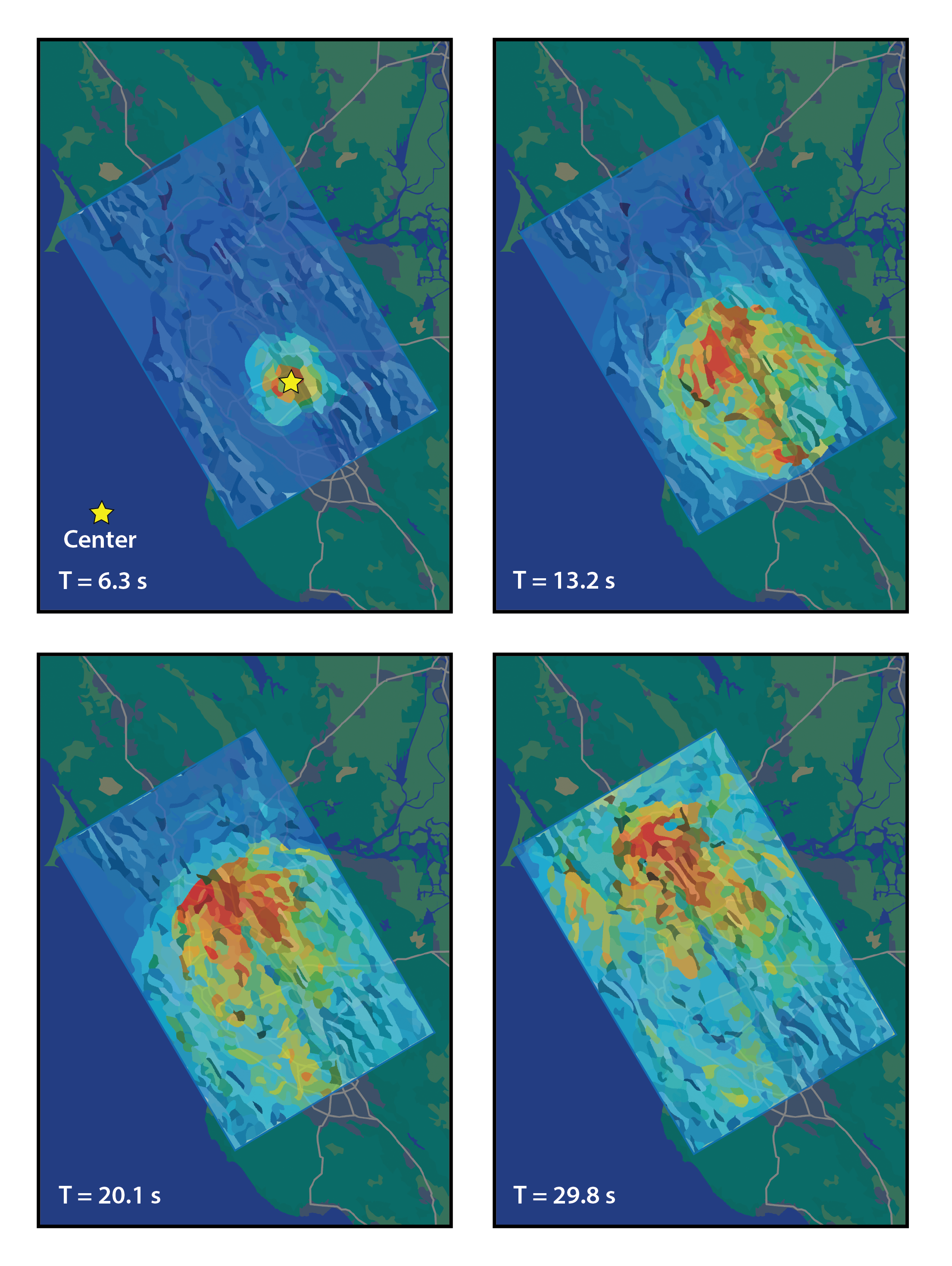
With EQSIM’s upgrade completed, the next important step is testing—will it be able to simulate earthquakes rapidly and accurately? EQSIM will need to perform in two main areas: accurate propagation of seismic waves from the earthquake and local soil-structure interactions once those reach individual buildings. To test EQSIM’s accuracy in simulating the path of seismic waves, McCallen and his team can turn to data collected on past quakes. So far, EQSIM has been tested against seven different smaller quakes of about magnitude four. “Some of the sites, we just nail it. The ground motion looks great,” McCallen says proudly. However, some sites don't compare as well, largely because the local geology at those sites is not as well characterized. As geologic data continues to improve in specific locations, simulation results will continue to advance at all sites.
In addition to the regional simulations, LBL has led a Department Of Energy development of a large soil box for experimentally testing the interactions between a structure and its surrounding supporting soil site. “That’s a complicated regime,” McCallen states. “It’s very hard to get data on the earthquake response because you don’t know what the incoming seismic waves are.” Developing the ability to run carefully controlled tests in the Laboratory will help understanding and validation of the accuracy of computer code.
One remaining challenge is the fact that major earthquakes can exhibit significantly different behavior than smaller ones. To evaluate the performance of EQSIM for major earthquakes, it has been tested against previously recorded historical powerful events. Its performance on these quakes has been positive, McCallen says. “It gives us a good feeling that our models are working reasonably well.” At the end of the day, the goal of EQSIM is to reduce the uncertainties in predicting earthquake effects and inform better building design for earthquake resistance. Working together with the Laminar Soil Box system, the project looks to have a bright future. Our local Hayward Fault, however, remains difficult to directly model, since the last major earthquake occurred in 1868, before accurate seismic data could be collected.
So where does that leave us, as residents living above the Hayward Fault? As previously mentioned, there have been no large earthquakes on the fault since 1868—155 years ago. For a fault that has historically experienced a major event every 95 to 160 years, it appears that we are overdue for such an event. For a fault line, the release of tension which results in earthquakes is not a matter of if, but when. McCallen has a few recommendations for basic earthquake preparedness that we can all do. First, he carries a pack of emergency supplies in his car each day, in case a major earthquake occurs and he finds himself stranded in Berkeley. Second, for those who live in older buildings, getting those buildings checked for safety and retrofitted can make a major difference in the event of a large earthquake. Finally, the USGS recommends that in the event of an earthquake, you should take cover under a desk or table, stay clear of windows, appliances, or heavy furniture, and not run downstairs or outside while there is active shaking. With these tips in mind, we can take care of our personal responsibilities while the earthquake scientists do the rest.
This article is part of the Fall 2023 issue.
